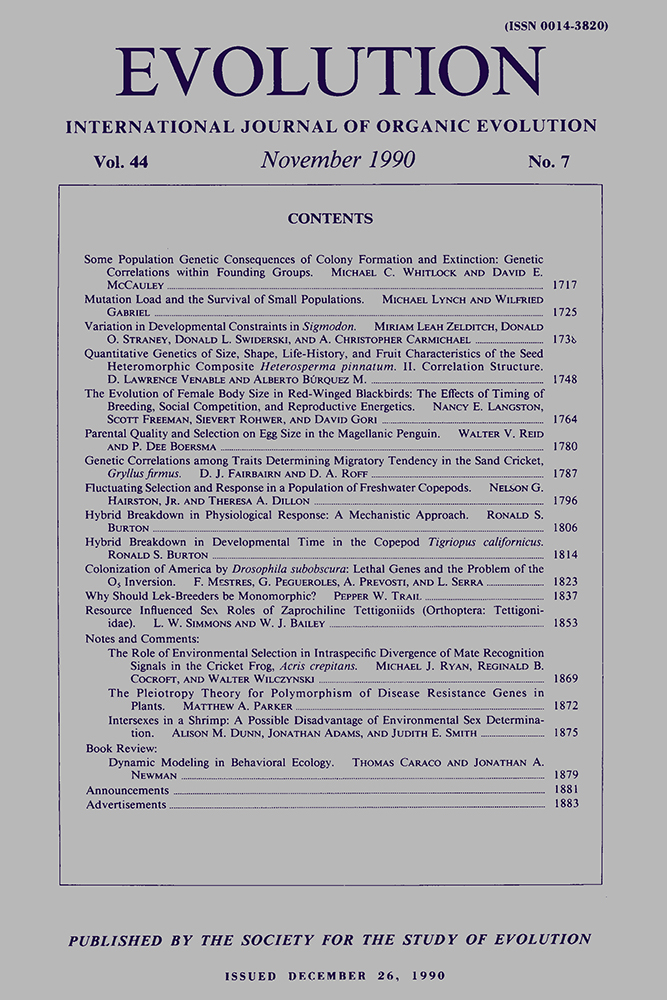HYBRID BREAKDOWN IN DEVELOPMENTAL TIME IN THE COPEPOD TIGRIOPUS CALIFORNICUS
Abstract
Laboratory crosses were carried out among three genetically differentiated Los Angeles populations (all located within approximately 15 km) and one San Diego population (approximately 150 km away) of the intertidal copepod Tigriopus californicus. Despite high levels of allozyme differentiation, all crosses produced viable F1 progeny. Most F1 progeny had shorter developmental times and reduced variance in developmental times compared to the parental populations. Only one pair of populations failed to produce viable F2 progeny; when the central Los Angeles population (AB) was crossed to the San Diego (SD) population, most larvae died during the late naupliar stages. Developmental times in the F2 generation of the other Los Angeles × San Diego crosses were typically 40% longer than developmental times of the parental populations. Among the Los Angeles populations, only one cross (and not its reciprocal) showed a similarly large increase in developmental time. Variance in F2 developmental times was greater than the parental variance in 5 of 10 crosses. These results are discussed with regard to the evolution of coadapted gene complexes and population differentiation in T. californicus.




